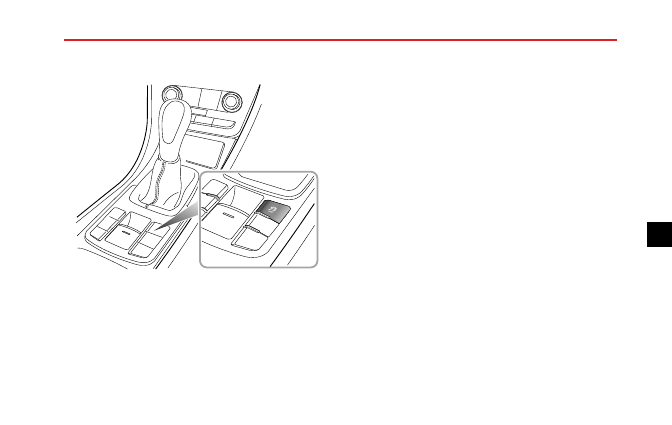MG 615. Service Manual - part 10

STARTING AND DRIVING
Switching On and Off
O F F
SCS and TCS are automatically on standby after engine
start.
• Briefly press the SCS switch (less than 2 seconds).
TCS is disabled, and the traction control indicator will
illuminate. The Traction Control System Off and the
TCS icon will appear in the message centre.
• Press the SCS switch (more than 2 seconds). TCS and
SCS are both disabled. The traction control System
indicator will illuminate and Traction Control Off
and the TCS icon will appear in the message centre,
followed by the message Stability Control System Off
and the SCS icons displayed.
Note: Activation of the SCS/TCS switch in excess of
10 seconds will be regarded as a mis-operation.
• Briefly press the SCS switch (less than 2 seconds) again,
SCS and TCS will resume, and warning lamps extinguish.
Note: Disabling SCS and TCS will not affect the
operation of ABS. Always disable TC when driving
with snow chains fitted.
SCS/TCS Warning Light
For information on warning light operation, refer to
‘Warning Lights and Indicators’ in ‘Instruments and
Controls’.
145
5